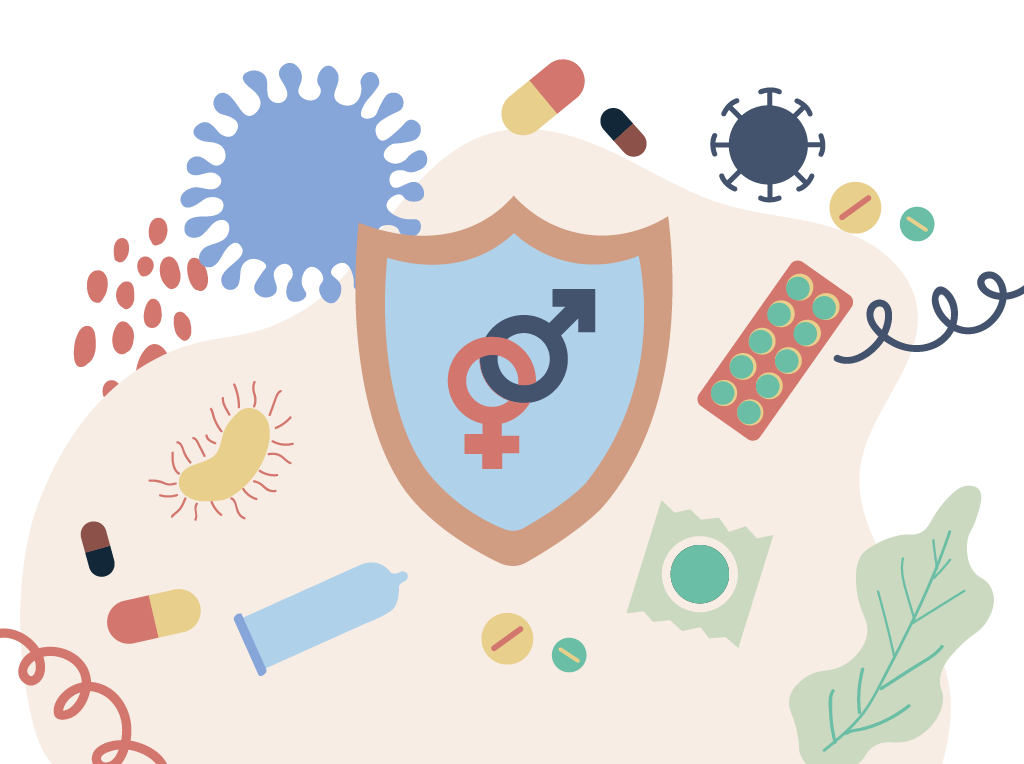Our Vagina makes its natural fluid or natural lubricant. The fluid keeps the vagina elastic and healthy. When women are sexually aroused, their vagina produces extra fluid. This fluid helps to reduce friction and makes putting anything into the vagina easy and comfortable. This also helps make sex feel more pleasurable.
When the vagina does not produce enough fluid, it causes vaginal dryness. In normal times, the hormone Estrogen helps the vagina stay lubricated. This keeps the lining healthy and elastic. When the Estrogen levels drop, it can bring in vaginal dryness. Stress, anxiety, and certain medications can also contribute to intimate dryness.
Dryness in the Vagina over time can cause pain, burning, itching, and may lead to a higher chance of getting an infection in your vagina as well as a higher chance of getting an infection in your Urinary tract (this includes your urethra, bladder, kidney). It’s important to keep your vagina moist, even if you are not having sex.

What is a lubricant?
Vaginal lubricants help to enhance your vagina’s natural moisture. Vaginal lubricants are commonly referred to as personal lubricants, body glide, sexual lubricants, and lube.
Why use a lubricant?
Using a vaginal lubricant helps in the following. It reduces friction, increases sexual pleasure, reduces the risk of STIs and improves effectiveness of a condom by preventing tears.
Types of Lubricants-
Water-based Lubricant: Water-based lubricants are the most common type of sexual lubricants. They can also be used to make it easier to insert dilators or tampons into your vagina. These are also the easiest kind of lubricants to find in a store.
Water-based lubricants are the best option to use with condoms, diaphragms (a cup-shaped device inserted into the vagina to prevent pregnancy), rubber dams (a small thin rubber or latex sheet used as a barrier to help prevent sexually transmitted infections during oral sex), other barrier ways of preventing pregnancy and infection. Water-based lubricants come in liquids, gels, and lotion options. They can safely be used with vibrators and other sex toys.
Silicone-based Lubricant: A Silicone-based lubricant stays slippery much longer than a water-based lubricant. This is because, unlike water, silicone does not dry up in the air, absorb into the skin, absorb into the bloodstream. It stays on the surface of your body and inside your vagina, making it last longer.
Silicone-based lubricants can be used during sexual pleasuring (including penetrative sex) and for massage. It can be applied to any part on the body that you want to caress or massage. A Silicone-based lubricant is a good option for women who have sensitive skin. Silicone is hypoallergenic (will not cause allergies). In those who often get yeast infections,this is a good alternative .. Silicone will not change the pH level in the urinary tract (urethra, bladder, kidney), so it does not increase your chance of getting a urinary tract infection.
Oil-based Lubricant: Oil stays moist and slippery for a long time because it does not absorb easily into your skin. They are also useful to use for manual stimulation (sexual stroking using the hand and fingers) of the penis and clitoris. Manual stimulation with a lubricant often feels very good for both men and women. Oil based lubricants however can degrade latex and reduce the efficacy of condoms and other latex protection. It is not advisable to be used with them. Many oil-based products are very hard to wash off or to flush out of your body. Synthetic oils can stay in your vagina for days.
This can change the pH (acid) level in your Vagina, making it easier for germs to grow. It can lead to infections in your vagina and urinary tract. One example of synthetic oil is petroleum jelly (Vaseline). Natural oils (e.g. natural coconut or almond oils) are often safe to use inside your Vagina as they are easier for the body to clear, but they should not be used with latex condoms or sex toys.
Fertility-friendly lubricants: Fertility-friendly Lubricant is a high-quality lubricant that mimics fertile cervical fluids to support sperm on their journey. Unlike most other lubricants, the fertility-friendly lubricant is pH-balanced and isotonic, so sperm can swim freely. Fertility-friendly should be sulfate and paraben free and glycerine free or ones that don’t have high viscosity.
One should always make sure that one is adequately lubricated during sexual intercourse, to prevent trauma to the lining of the vagina or urethra and also prevent infection. Certain products are natural that are great lubricants including jojoba, coconut oil, and aloe. A vitamin E suppository may be an additional option.
The use of lubricants is a matter of personal choice. The right lubricant can prevent pain and injury, and minimize the chance of condom breakage. To avoid a cold shock, squeeze the lube onto your hands first. Rub them together, and then apply to your body. You can warm your lube in a mug of hot water. If you’re prone to yeast infections stay away from lubricants with glycerine and avoid using flavored, pre lubricated condoms in your vagina. The compound can irritate the Vagina and kill good bacteria, triggering an infection. If you’re trying to conceive, look for a lubricant that says it’s ‘fertility-friendly’ on its packaging.
Research shows lubricants are used by approximately one in four couples during procreative intercourse. Lubricant use does appear to vary by female age and education level among pregnancy planners.
Disclaimer : This information is educational and should not be construed as medical advice. Please consult your doctor before making any dietary changes or adding supplements.
ProactiveForHer is a digital clinic for women, offering accessible, personalised, and confidential healthcare solutions. We offer out-patient care, diagnostic services and programs for various health concerns of Indian women, across their lifetime - from puberty to pregnancy to menopause.

